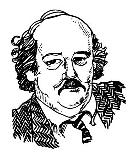(Syndicated to Kansas newspapers Dec. 1, 2014)
 This may be the year that again proves—more dramatically than in recent years—that the most powerful person in the Kansas Statehouse is the Speaker of the House of Representatives. Yes, the Speaker of the House of Representatives.
This may be the year that again proves—more dramatically than in recent years—that the most powerful person in the Kansas Statehouse is the Speaker of the House of Representatives. Yes, the Speaker of the House of Representatives.
We all learned in grade school that the governor is the top position in Kansas government, but it’s different this year.
There are keys to that House power that will be clearly defined not just Monday when House Speaker Ray Merrick, R-Stilwell, was reelected to a second term at the chamber’s top spot but also will become apparent in the next week or so.
Things are different this year in the apportionment of power within the Statehouse for several reasons.
First is the budget problem…Revenues aren’t keeping up with current levels of expenditures and aren’t expected to. Second is how Merrick’s House responds.
How the House deals with that problem—though there are a handful of House Republicans who see falling revenues as an opportunity to slash state government spending—determines what happens to Kansas.
The Senate? Just 40 of them, of course, and last session it was somewhat interesting to watch the Senate’s Republicans speak…and Gov. Sam Brownback’s lips not move. Look for the Senate in the upcoming session to take Brownback’s side on nearly every serious issue considered, with just a few Republicans looking over their shoulders at what sort of tracks they will be leaving when they stand for reelection in 2016.
But it will be the House that runs things, either the governor’s way when he concurs with the House or the House’s way with the governor and Senate likely having to cave in.
That’s what happens when a chamber is heavily one-party. In the Senate, there are, of course, 32 Republicans, just four of them who generally don’t agree with Brownback on social/fiscal issues and the remainder essentially hand-picked by Brownback in 2012, when he stepped into the GOP primary election scuffle to oust members who didn’t agree with him.
But the House? Well, without much visible side-taking by the governor in this year’s elections, the House is busting with generic Republicans.
And, of those 97 House Republicans—the biggest majority since the early 1950s—there is a split. Roughly—because it changes issue-to-issue—there are maybe 20 who are comfortable in the presence of (and often voting alongside) Democrats; maybe 50 who aren’t, and maybe another 20 who aren’t comfortable with the Republicans who are comfortable with Democrats.
That rough split makes the Speaker the most powerful person in the Statehouse.
Yes, the Speaker, from a district with about 23,000 citizens, gets to run things because the Speaker single-handedly gets to appoint the chairs of committees and the members of those committees.
That means that the Speaker, who also has final say on which bills go to which committees, can send bills to committees where his supporters are in the majority and produce the results he wants. That’s pretty simple, isn’t it?
Oh, and those Republicans who don’t support the speaker on every issue? They get scattered among committees that won’t get the bills that the Speaker wants passed in the form he wants them.
Does it get any more powerful than that? Well, the House Speaker can’t sign bills into law, but he can make sure that that the governor doesn’t get bills that he doesn’t want the governor to sign. That’s a lot like putting the governor on a short leash, held by the Speaker.
So…probably within a week or so, we’ll know whom the Speaker names as committee chairs, and which committees the Speaker believes need packing with his allies, and we’ll know a lot about how the 2015 session of the Kansas Legislature is going to end.
